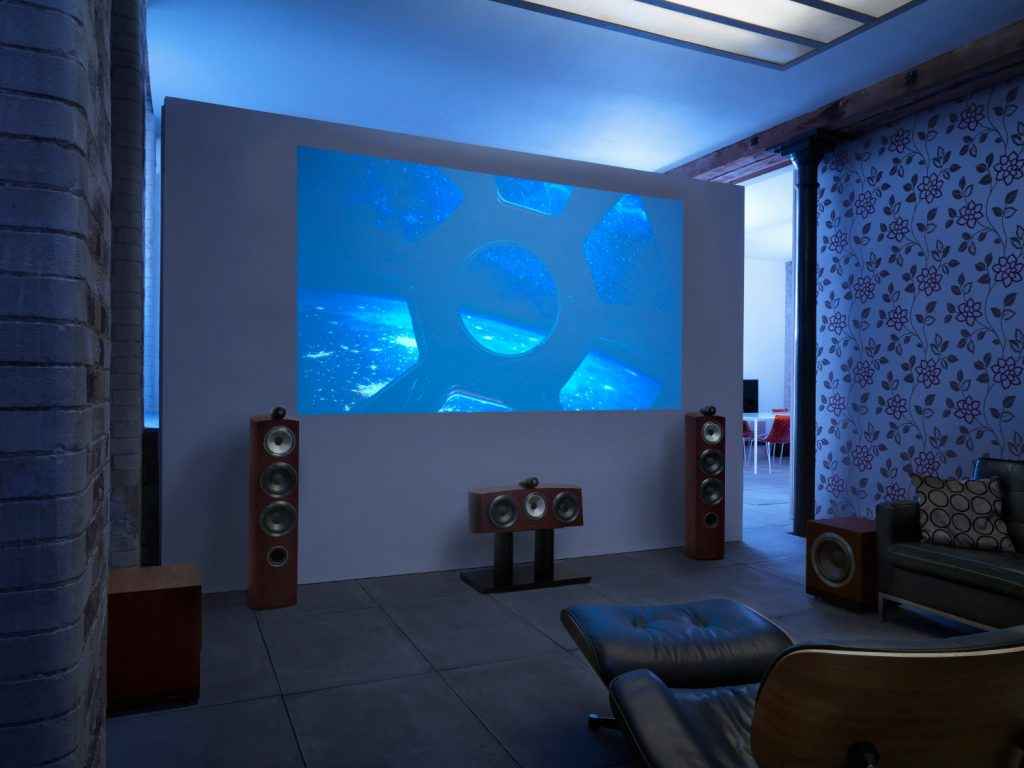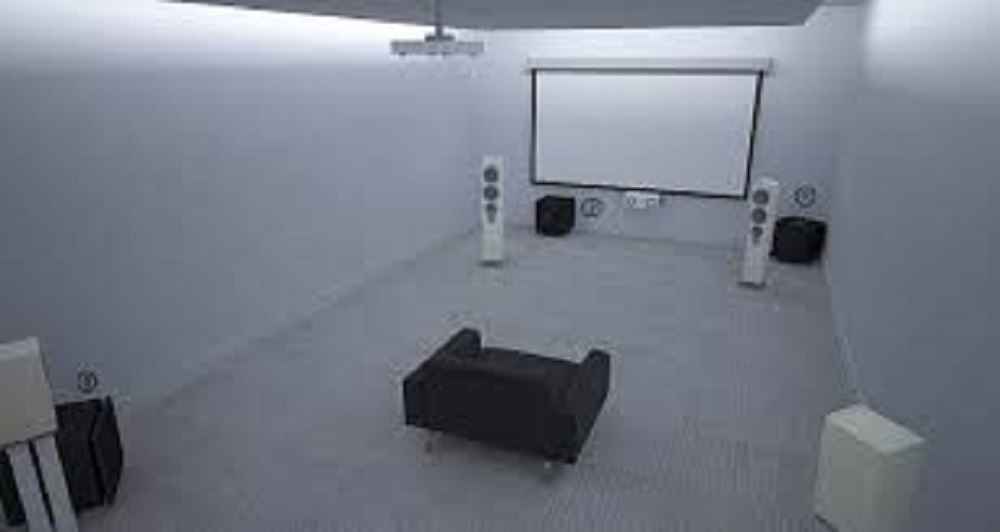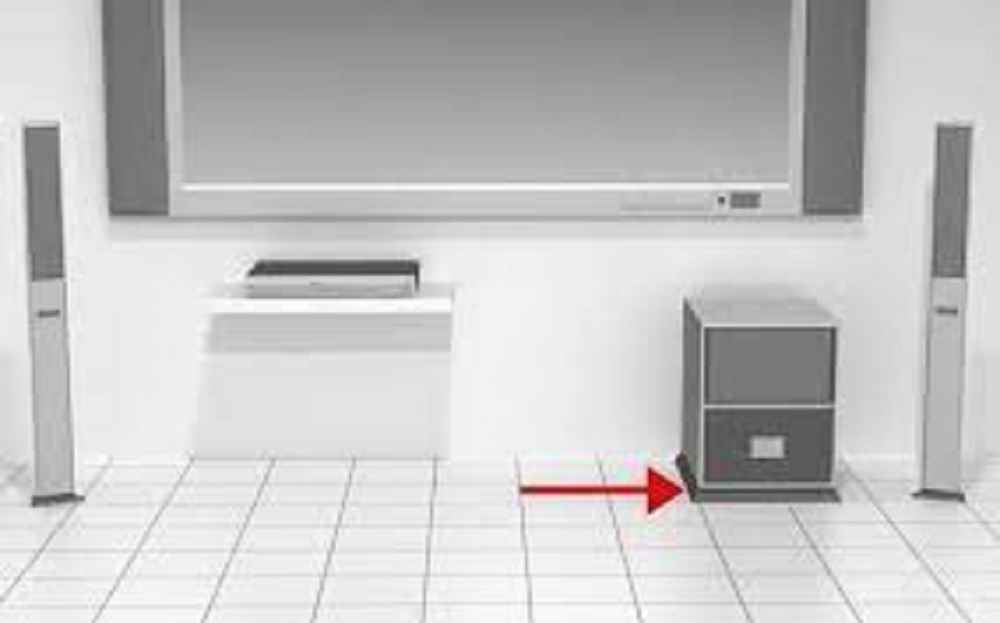Subwoofers are an essential component of any home theater or high-fidelity audio system. They are designed to produce low-frequency sounds, such as bass, drums, and explosions in movies, that are not adequately handled by standard speakers.
Proper placement of subwoofers is critical to achieving the best sound quality, and there is a debate over whether they should be placed on the floor or on other surfaces.

Should a Subwoofer Be On Floor?
There is no perfect answer to this question as the answer is subjective to the user’s preferences.
Some users believe that placing a subwoofer on the floor is the most convenient and safest option. It also enables low frequencies to propagate more to create the desired effect.
Other users hold that placing a subwoofer on the floor is not the best option and believe that subwoofers should be elevated for the best sound output and to reduce vibrations.
Advantages of Placing Subwoofers on the Floor
One of the main advantages of placing subwoofers on the floor is improved bass response. Low-frequency sounds, such as bass, are omnidirectional, meaning they can travel in all directions.
When a subwoofer is placed on the floor, it is in a position to better radiate these sounds, resulting in improved bass response and overall sound quality.
Placing subwoofers on the floor can also enhance the soundstage, creating a more immersive and believable sound experience. The floor provides a solid surface that helps to reinforce and stabilize the sound, leading to a more stable and accurate soundstage.
Another advantage of floor placement is improved room integration. When subwoofers are placed on the floor, they can be positioned closer to the listener, making it easier to achieve the ideal balance between the subwoofer and other speakers in the room.
This improved integration can result in a more cohesive and seamless sound experience.
Disadvantages of Placing Subwoofers on the Floor
While there are many advantages to placing subwoofers on the floor, there are also some disadvantages to consider. One of the biggest challenges with floor placement is vibration and resonance.
When a subwoofer produces low-frequency sounds, it can cause the floor to vibrate, which can result in distortion and a loss of sound quality. This can be particularly problematic in homes with hard flooring surfaces, such as concrete or tile.
Another potential drawback of floor placement is the impact on the flooring itself. Over time, repeated exposure to the vibrations produced by a subwoofer can cause damage to the flooring, leading to cracking, warping, or other types of damage.
Finally, some people simply do not like the look of subwoofers on the floor. For these individuals, the aesthetics of floor placement may be a deciding factor in choosing a different placement option.

Alternatives to Floor Placement
If the advantages of floor placement are not acceptable to you, there are several alternatives to consider.
One option is to place subwoofers on stands, which can help to reduce vibrations and provide a more stable base. Wall-mounted subwoofers are another option, which can be a good choice for those who are concerned about the impact of vibrations on the flooring.
Finally, in-cabinet subwoofers can be a good choice for those who want a more discreet and unobtrusive placement option.
Factors to Consider When Deciding on Subwoofer Placement
When choosing the best placement option for your subwoofer, there are several key factors to consider. Room size and layout are critical factors, as they will determine the available placement options and how different placement options will affect the sound quality.
Your listening habits and preferences should also be taken into account. If you primarily listen to music with a lot of bass, you may prefer a placement option that maximizes bass response.
On the other hand, if you primarily watch movies, you may prefer a placement option that enhances the soundstage and creates a more immersive experience.
The type of speaker and subwoofer you have will also play a role in your decision. Some subwoofers are designed to be placed on the floor, while others may perform better when placed on stands or wall-mounted.
Finally, budget is another factor to consider. Floor placement is often the most cost-effective option, as it does not require additional equipment, such as stands or wall-mounts.
However, if you are concerned about the impact of vibrations on the flooring or prefer a more discreet placement option, you may need to invest in additional equipment or choose a more expensive placement option.

Conclusion
In conclusion, the placement of your subwoofer can have a significant impact on the overall sound quality of your home theater or high-fidelity audio system.
Placing subwoofers on the floor can provide improved bass response, enhanced soundstage, and improved room integration. However, there are also disadvantages to consider, such as vibration and resonance issues, impact on flooring, and aesthetics.
Alternatives to floor placement include subwoofers on stands, wall-mounted subwoofers, and in-cabinet subwoofers.
When deciding on the best placement option for your subwoofer, consider factors such as room size and layout, listening habits and preferences, speaker and subwoofer type, and budget.
With careful consideration, you can choose the best placement option for your subwoofer to achieve the best sound quality possible.
Can placing a subwoofer on the floor cause damage to the flooring?
Yes, placing a subwoofer on the floor can cause damage to the flooring over time. The vibrations produced by the subwoofer can cause cracking, warping, or other types of damage.
To prevent this, consider using a subwoofer stand or wall-mount to reduce the impact of vibrations on the flooring.
Can placing a subwoofer on a stand improve the sound quality?
Yes, placing a subwoofer on a stand can improve the sound quality by reducing vibration and providing a more stable base. This can result in improved bass response, enhanced soundstage, and a more cohesive and seamless sound experience.
What are the disadvantages of wall-mounted subwoofers?
The disadvantages of wall-mounted subwoofers can include reduced bass response compared to floor-placed subwoofers and a more complicated installation process. Additionally, wall-mounted subwoofers may not be suitable for all types of wall construction and may require additional hardware or brackets.
Can in-cabinet subwoofers be seen?
In-cabinet subwoofers are designed to be discreet and unobtrusive, and they are typically not visible once installed. However, this will depend on the design and style of the cabinet, as well as the placement of the subwoofer within the cabinet.
Can subwoofer placement affect the sound quality of other speakers in the room?
Yes, subwoofer placement can affect the sound quality of other speakers in the room. Improper placement can result in a mismatch between the subwoofer and other speakers, leading to an unbalanced and unsatisfactory sound experience.
Careful consideration of subwoofer placement, along with proper room integration, can help to ensure the best possible sound quality from all speakers in the room.
